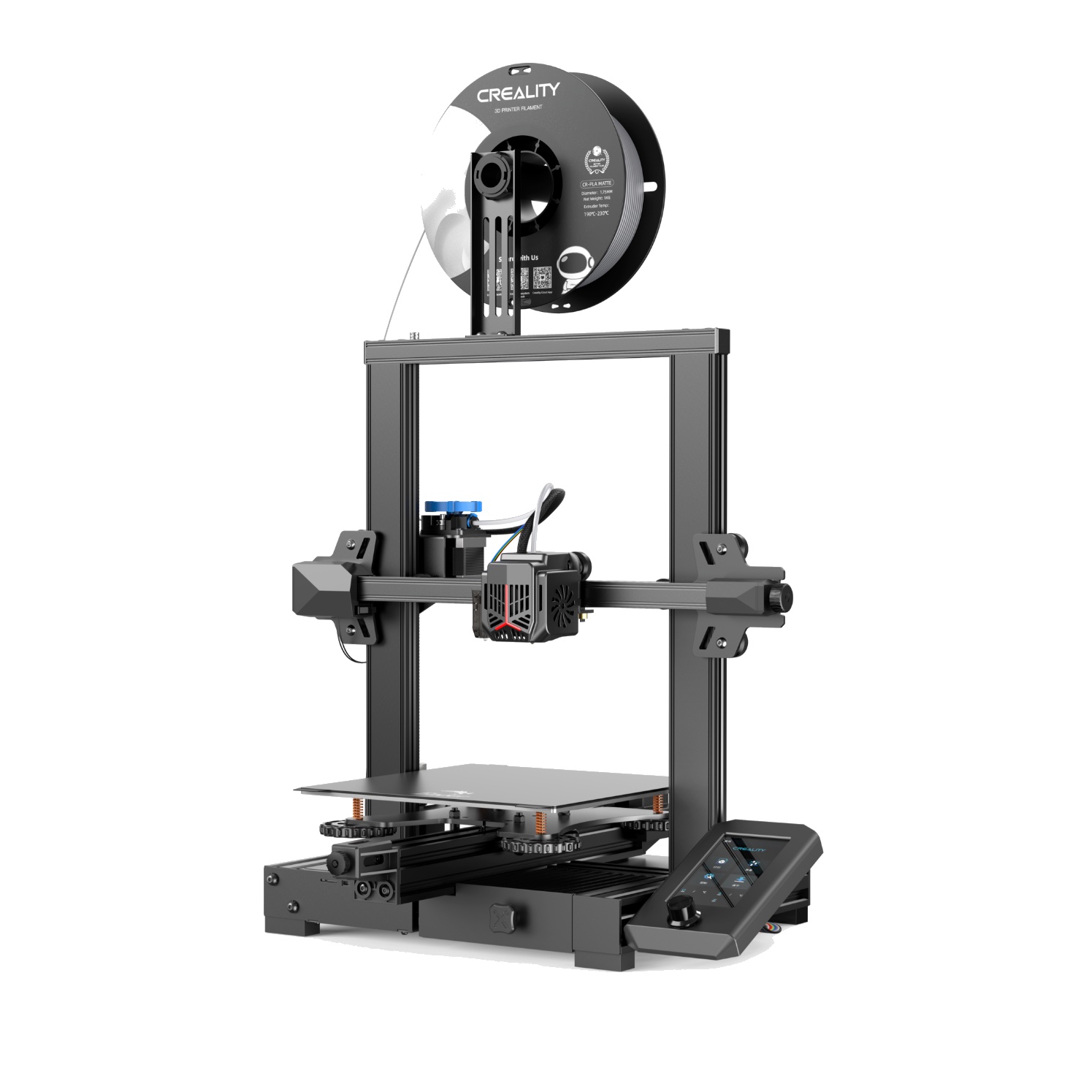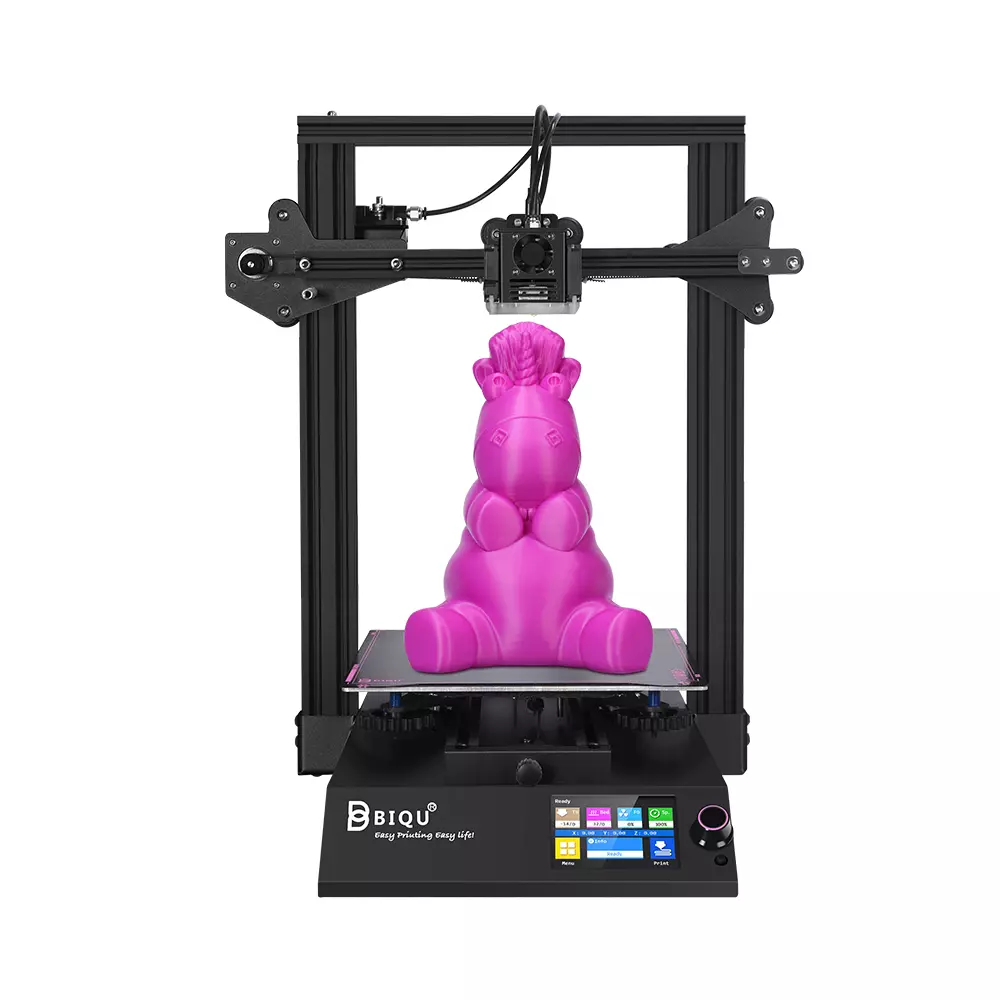Compare Ender 3 V2 Neo vs BIQU B1
Comparison between the best 3D printers
Choose the best 3D printer at the best price. The cheapest 3D printers are here.
Buy a 3D printer here with 3D Fila.
 |
 |
|
| Model | Ender 3 V2 Neo[BUY Ender 3 V2 Neo] |
BIQU B1 |
| Printing Material | Filament | Filament |
| Buy Filament for Creality 3D Ender 3 V2 Neo | Buy Filament forBigTreeTech BIQU B1 | |
| Estimated price | $310,00 | $269,00 |
| Manufacturer | Creality 3D | BigTreeTech |
| Release Year | 2022 | 2020 |
| Print Volume [mm] | 220x220x250 | 235x235x270 |
| Printer Size [mm] | 438x424x472 | 412x402x492 |
| Weight [kg] | 9,8 | 8,00 |
| Power Loss Recovery | YES | YES |
| Enclosed printer | NO | NO |
| Bed Leveling | Automatic | Manual |
| Filament End Sensor | YES | YES |
| Bed type | Heated | Heated |
| Power supply system | Bowden | Bowden |
| Standard nozzle | 0,4 | 0,4 |
| Maximum Nozzle Temperature [°C] | 260 | 250 |
| Maximum Bed Temperature [°C] | 100 | 100 |
| Maximum printing speed [mm/s] | 80 | 100 |
| Filament holder | YES | YES |
| Camera for supervision | NO | NO |
| Recommended filaments | PLA, PETG | PLA, TPU, ABS, PETG |
| Recommended slicers | Cura, Simplify, Slic3r, IdeaMaker | Cura, Simplify, Slic3r |
| Maximum Resolution [mm] | 0,1 | 0,1 |
| Processor | 4.2.2 mainboard | 32 Bits BTT SKR V 1.4 |
| Display | Display touchscreen 4,3'' | Touchscreen TFT 3,5'' |
| Power Supply | 24V / 360W | |
| Connectivity | SD / USB | SD / USB |
| Operating systems | Windows, Mac, Linux | Windows, Mac, Linux |
| Date of registration in the system | 2022-12-09 | 2021-04-14 |
| Release date | 2022 | 2020 |
| Extra features | The Ender 3 V2 Neo printer stands out for its automatic bed leveling with the CR Touch system, ensuring high-quality initial layers. It features an all-metal Bowden extruder for increased durability and improved filament handling. Its flexible, PC-coated magnetic build plate makes it easy to remove prints and is durable and easy to clean. It also includes a new user interface with model preview and an updated gantry design. The Ender 3 V2 Neo maintains the same build volume and temperatures as the previous version, supporting popular filaments such as PLA and ABS. It features a quiet 32-bit mainboard and additional features such as a filament sensor, print recovery, simple 3-step assembly, an integrated toolbox, and belt tensioners. | The BIQU B1 is an advanced 3D printer with a silent 32-bit BTT SKR V1.4 motherboard and ARM Cortex-M3 CPU, offering DIY interfaces (I2C, SPI, WiFi) and dual Z-axis. Its dual BTT B1 TFT35 V3.0 operating system allows real-time monitoring and multiple printing modes, including G-code visualization effects. It stands out for its BIQU SSS (Super Spring Steel), ensuring easy model adhesion and simplified removal, with the possibility of using it on both sides. It includes a filament sensor, automatically pausing printing in case of filament breakage. The multicolored RGB lights integrated into the hotend allow you to view the printing status even at night. Additional notes include the need for a BIQU-specific Type-C cable and extra interfaces for smart filament sensor and BL Touch. |
| Support for multiple colors and materials (AMS and CFS) | NO | NO |
Notes * |
||
| Cost-benefit | 6 / 10 | 7 / 10 |
| Hardware | 2.4 / 10 | 2 / 10 |
| Tela | . | . |
| Print volume | 3 / 10 | 3 / 10 |
| Performance | 0 / 10 | 1 / 10 |
| [BUY Ender 3 V2 Neo] |
Conclusion |
| In concluding the comparison between the Creality Ender 3 V2 Neo and the BIQU B1, both printers indeed offer compelling features for 3D printing enthusiasts, catering to different needs and preferences. The Ender 3 V2 Neo shines with its automatic bed leveling system, making it more user-friendly for beginners and ensuring consistent initial layer adhesion. Additionally, its notable design improvements and features like the flexible build plate contribute to a smoother user experience. However, it comes at a slightly higher price point, reflecting its advanced capabilities. On the other hand, the BIQU B1, although somewhat older, boasts a larger print volume and is equipped with a powerful 32-bit processor, providing excellent performance for more experienced users who may prefer to customize their settings further. The dual Z-axis and the glass bed with superior adhesive properties also enhance print quality and ease of use. Its cost-effectiveness makes it particularly appealing. Ultimately, the choice between these two printers should consider individual user requirements and preferences. The Ender 3 V2 Neo is likely better suited for those new to 3D printing who prioritize ease of use and reliability, while the BIQU B1 may attract those with more experience looking for versatility and value in print volume and customization options. |

